You might be surprised to learn that watermelon plants love growing on a trellis! Although the tendrils of a watermelon vine aren’t strong enough to search out and climb a vertical support on their own, with a little bit of human help, watermelons thrive when grown off the ground.
Growing watermelon up a trellis has the following benefits:
- Trellised watermelons save square footage in your garden
- A trellised vine can create shade for plants (or chickens!) underneath the vines
- Growing up a trellis helps watermelon leaves get more ventilation- reducing fungal counts and resulting in healthier plants with energy to produce more, larger watermelons.

Watermelon plants are susceptible to a type of leaf fungus called Powdery Mildew that is caused by moisture remaining on the leaves overnight. By elevating your watermelon vines, you can increase airflow to the leaves, reduce moisture left on leaves after rain, eliminate completely leaf-surface moisture from watering (you’ll only be watering the base of the plant), and significantly increase watermelon yield.
Trellised on a chicken coop, the benefits are mutual: supporting healthier chickens and bigger watermelon yields Part 2 of this article discusses growing near- and for- chickens in depth:
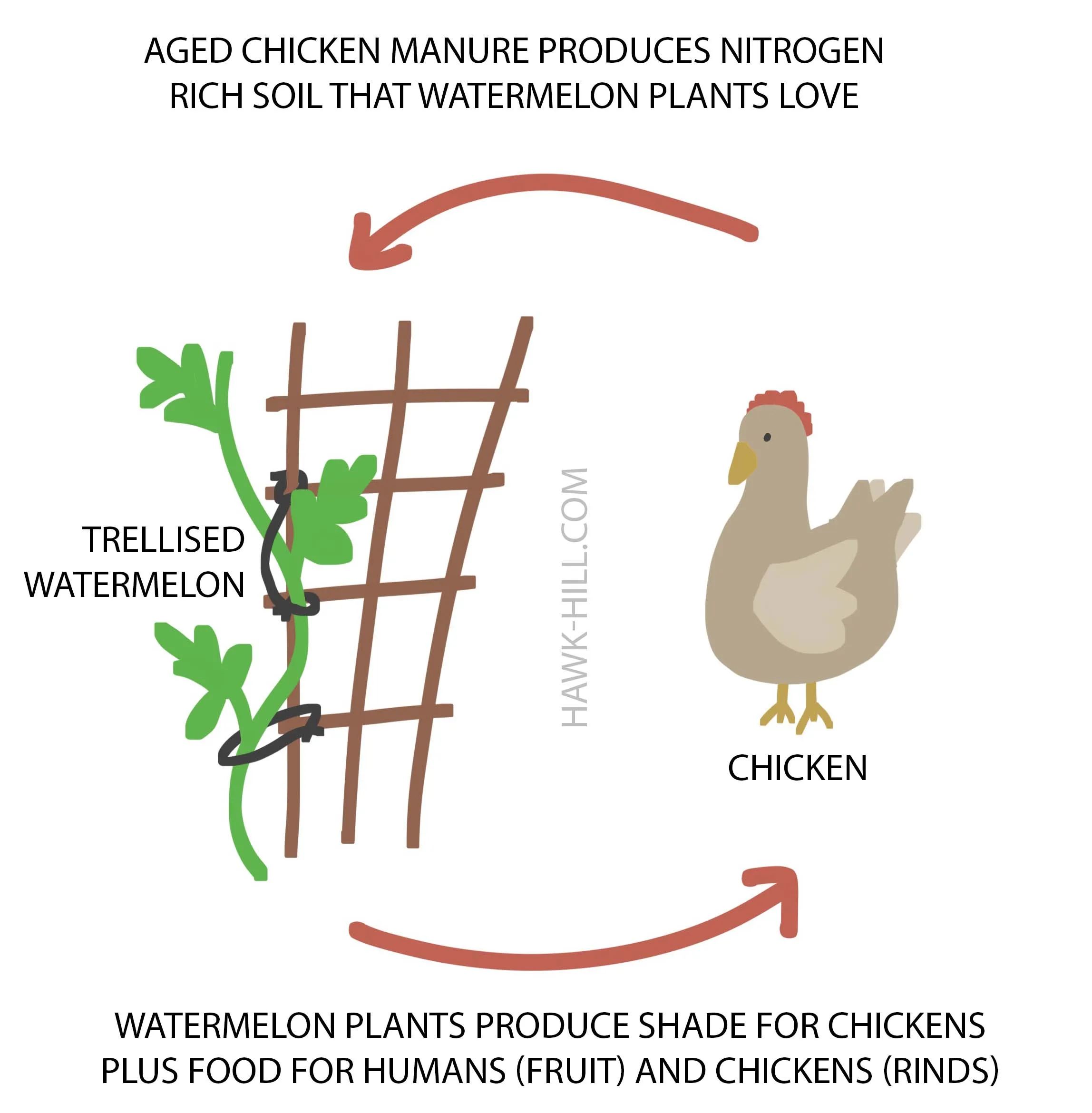
The following section may contain affiliate links. As an Amazon Associate, we earn from qualifying purchases.
Hot to Make a Watermelon Trellis
You just need three things:
- Vertical supports – this can be almost anything: a rose trellis, a piece of old fencing propped up on a t-post, a chain link fence, chicken run fencing, three slender logs stood on end and tied in a teepee, etc. Whatever you choose, make sure it can support the weight of 2-3 watermelons per plant (sugar baby watermelons work great for this method and eliminate issues trying to support enormous melons)
- Soft ties – You’ll need to manually tie new vine growth to the trellis about once a week (unless you are growing over the top of the chicken coop), once the vine reaches the horizontal roof panel, the watermelon can grow unaided. Check out these cushioned twist-tie type garden ties.
- Watermelon Hammocks – There are lots of ways to support your growing watermelons. In the past, I’ve used burlap quickly ran through a sewing machine to make actual hammock type slings for my trellised watermelons, but I’ve seen other gardeners succeed using pantyhose and even fabric shopping bags to support the growing weight of their watermelons.
Using ties to support the trellised vines:
Plants like peas and cucumbers enthusiastically vine without support, but watermelons need some coaxing in the form of plant ties. You can purchase cushioned twist-tie type garden ties*, but I have always made my own. Growing up, my grandmother taught me to use old nylon pantyhose cut into loops to secure plants. As pantyhose finally made their exit from women’s clothing, I chose a more environmentally friendly replacement. Nowadays, I cut my ties from natural textiles I’ve thrifted or picked up at garage sales. Knit cotton is strong enough to support watermelon vines through a whole season and biodegrade naturally at the end of the season. This year, I’m actually using cashmere scored from the Goodwill outlet – it’s super soft, super stretchy, and perfect for supporting delicate plants.
Training your watermelon to climb a trellis
Like many vining plants, growing your plant on a trellis is little more than a matter of aiming the vines in the right direction. Tie loose loops to hold the vine in place on the trellis. You never want to cut off “circulation” in the vine, so I recommend using large fixed loops that simply hold the vine in proximity, while also letting it wave loosely. Another option is to use a longer tie and tie one end of the tie loosely around vine and the other end of the tie around the trellis support. This can be helpful for training, as a small amount of tension can be left in order to “pull” the vine up the trellis.
Your vines might need gentle coaxing to grow upward instead of crawling across the ground. Always handle the vines gently – for vines that don’t easily redirect in the direction of the trellis, put a stake in the ground midway between the vine and the trellis and train the vine to climb the stake by using a tie to secure the vine loosely to the stake. After a few days, the plant will naturally yield in the direction it’s being held, and you’ll be able to manipulate the vine further over onto the trellis.
Supporting Growing Melons
As your melons grow, they’ll need a little support. When a baby watermelon reaches fist-size, you should give it some extra support with a sling or hammock. Encourage melons to grow their biggest by pinching all but 2-3 melons.
As my watermelon vine extended up the chicken coop, I constructed slings with burlap to bear the weight of the melons until they were ready to harvest.
Yield from trellised watermelons
Before I trellised my watermelons I never had satisfying yields from my melon patch. Despite many attempts, at best, each summer I’d get one or two melons from a patch of 4-6 plants. Once I started trellising my watermelons that all changed! With my watermelons planted in the nitrogen-rich soil around my chicken coop, they thrive. In the blazing sun of the Missouri heat, they explode with growth over the chicken coop. Their ariel location means Powdering Mildew never gets a foothold, and leaves are healthy and fully dedicated to pumping energy into the swelling watermelons. When the vines each the horizontal wire panels at the top of my chicken run, they really grow wild. With my trellis watermelons I get at least two watermelons per plant – and with the melons suspended about 5ft in the air I haven’t lost a single melon to garden pests!
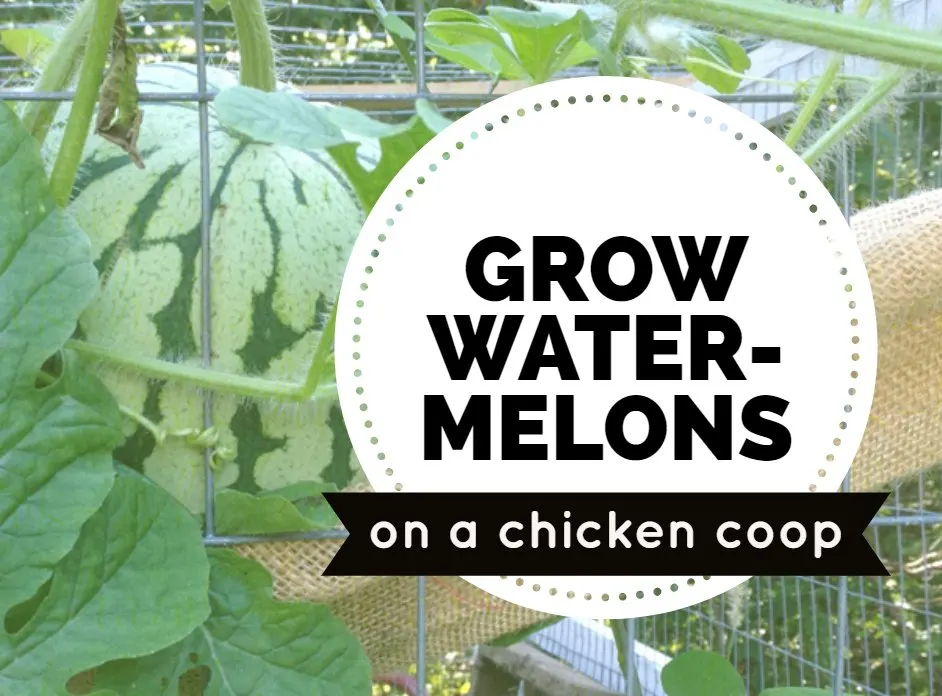
Like a lot of chicken owners, I struggle to get anything green to grow in my chicken coop. Last spring, totally out of space in my garden, I decided to experiment with growing on a watermelon trellis- vining the plants vertically up the “trellis” of my chicken coop’s run, and it went so well that I eventually added it to my top tips for chicken coop landscaping.
Growing vining plants vertically near chickens can maximize space while creating a symbiotic garden relationship. Watermelons are a particularly good choice because watermelons thrive in the high nitrogen soil in areas near coops and chicken runs.

Below are some photos of my first watermelon vine growing up from where I’d simply tucked a leftover plant into the ground next to the coop after running out of space in my prepared garden beds. Planted just outside the chicken run (and with a bit of wire mesh placed around the seedling to protect it from free-ranging hens) the plant thrived. Every week or two I’d redirect any tendrils wandering along the ground up onto the wiring of the coop. Eventually, the vine spanned across an entire side and onto the roof, providing shade for hens in the summer.
Watermelons grow well near chicken coops for a few reasons:
- Soil around the chicken coops is rich with natural fertilizer (and watermelons can handle more than most plans, without burning)
- Previous activity by chickens had loosened soil and removed competing plants.
- Chickens don’t eat watermelon leaves (at least not in my tests with free-ranging chickens).
- The coop provides structure to lift the vines, so instead of taking up massive garden square footage, they grow up and over an existing structure.
- When my watermelon vines began to set fruit, I tucked the tiny watermelons between the wire mesh and inside the coop. Far over the chickens’ heads, they were unnoticed by the birds, while the wire mesh protected the growing fruit from garden pests that nibble melons.
- The prolific vines of watermelon provided much-appreciated shade over the coop during the hottest part of the summer.
I was pleased to find that either the hens didn’t like the taste enough to peck at the plant through the wire mesh, or just were not able to do much damage given that so little was within reach of their beaks.
I trimmed most competing fruit from my vine and focused its growing powers on just two melons.
Thanks for Reading!!!
I hope you can tell that I love DIY, researching the best affordable solutions for every-day problems opportunities and documenting / sharing solutions!🙌 Hawk-Hill.com is reader-supported.
☕ Hawk-Hill.com is reader-supported. If this article saved you time or money, please consider donating $1 to help me cover the cost of hosting this website OR If you appreciate this information and want to throw a “Thanks!” my way by buying me a coffee – I would Of Course appreciate it! :]
Reader Questions and Recommendations
Readers, do you have any favorite topics / posts? What would you like to read more about in the future? As I hope you can tell from this and other articles on my site, I really enjoy DIY / a good challenge, and I’m not afraid to roll up my sleeves to figure out a great, and hopefully simple 😁 solution. So please feel free to let me know in the comments below (or reach out via social media)!
Ok Really – I’ll try to wrap this up now😂
Finally, if you’d like to continue to learn about interesting DIY options as well as how YOU can tackle creative new projects consider checking out the latest and most popular articles listed on the Hawk-Hill Home Page. I’m always trying to enjoy and write about the creative side of life so please don’t be a stranger – check back often!😍
If you enjoyed this post you may also enjoy reading / perusing / devouring😊 one or all of these articles as well!
- 💡4 Easy Steps to Make Your Own Sea Glass 🌊
- ❤️Bedroom Decorating Ideas for Single Women’s Master Bedrooms 🛏️
- 🏡Ikea Kitchen Cost: What I Spent for a 9×12 Kitchen Remodel 💵
Want more creative chicken keeping ideas? Check out my creative chicken keeping category. Or these additional reads:

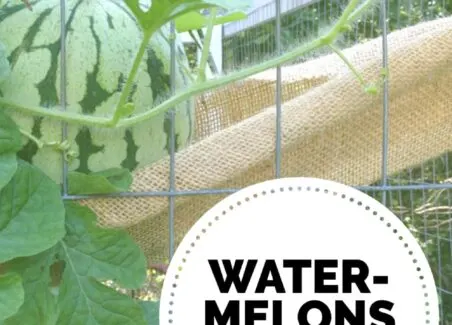
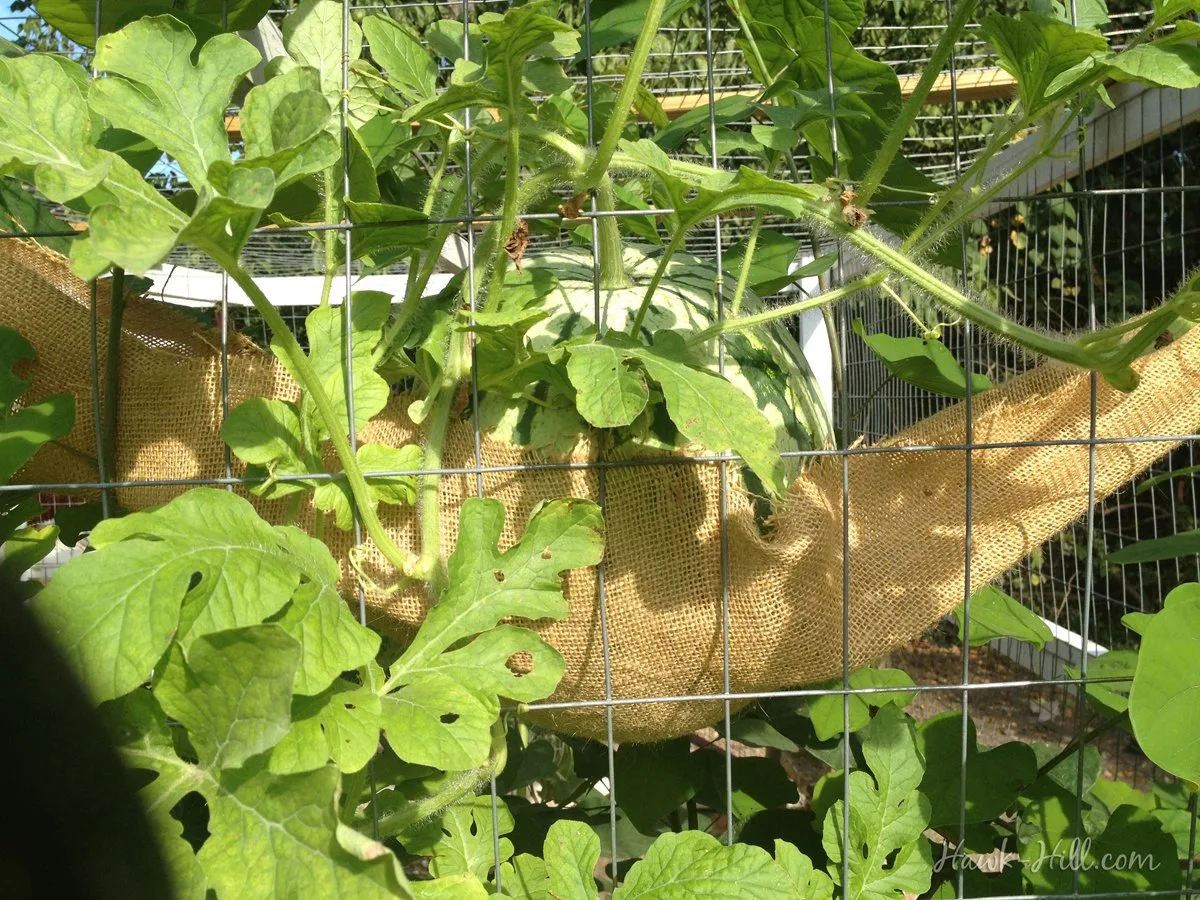
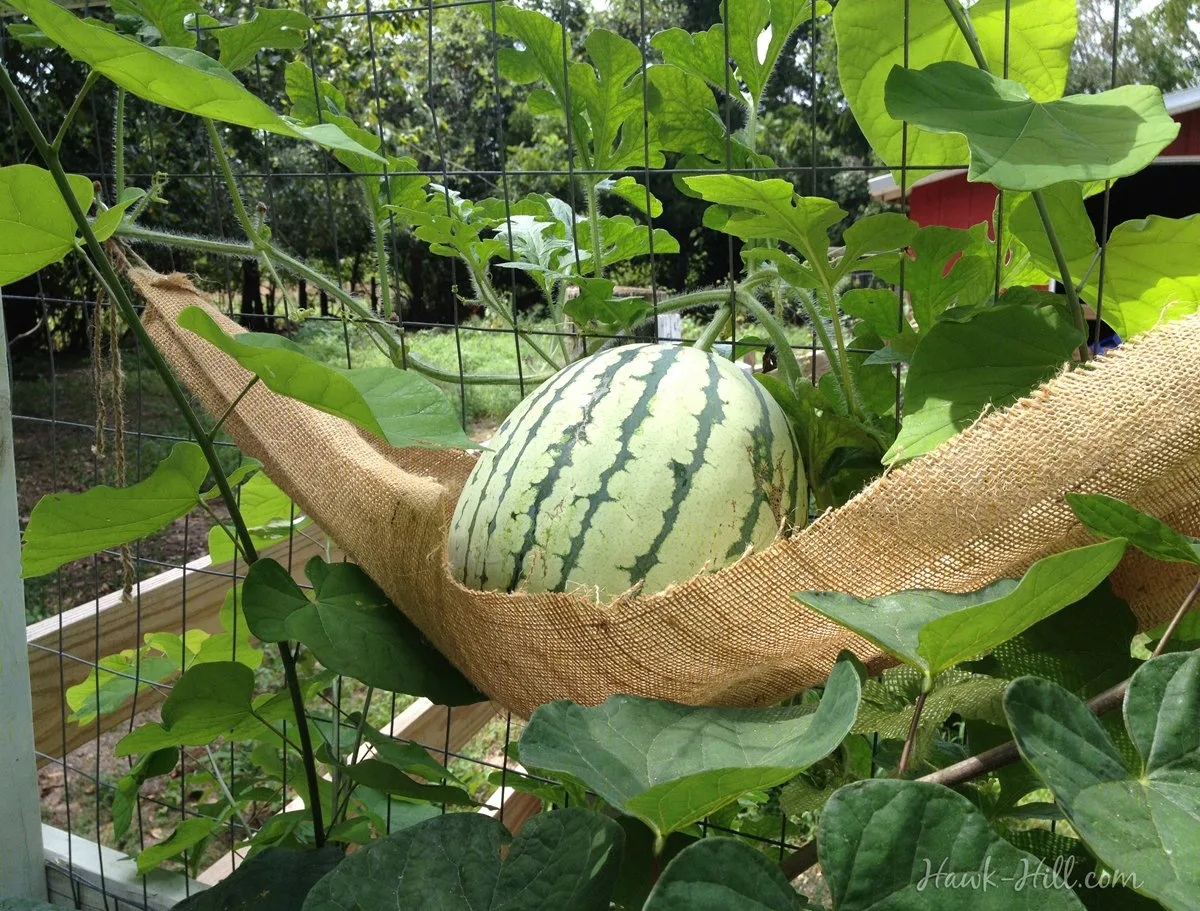
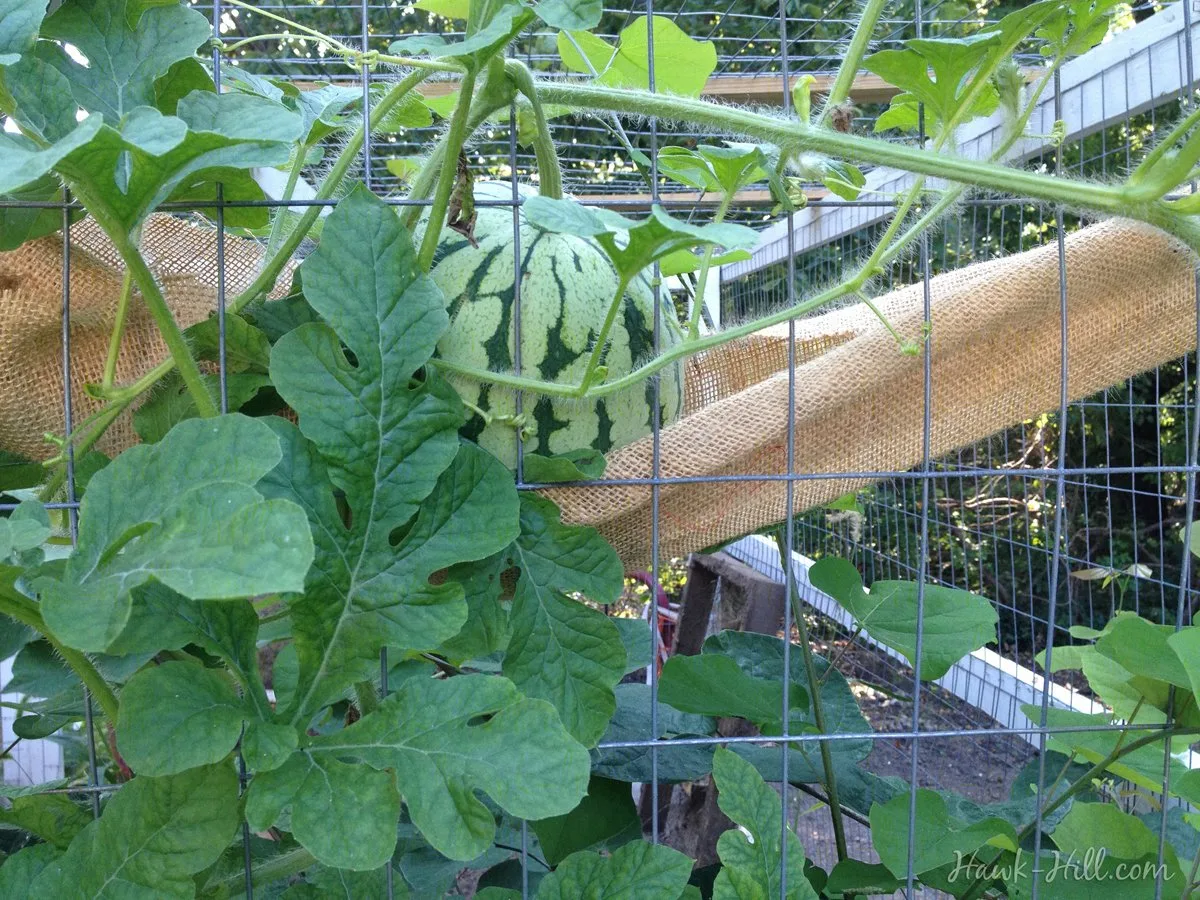
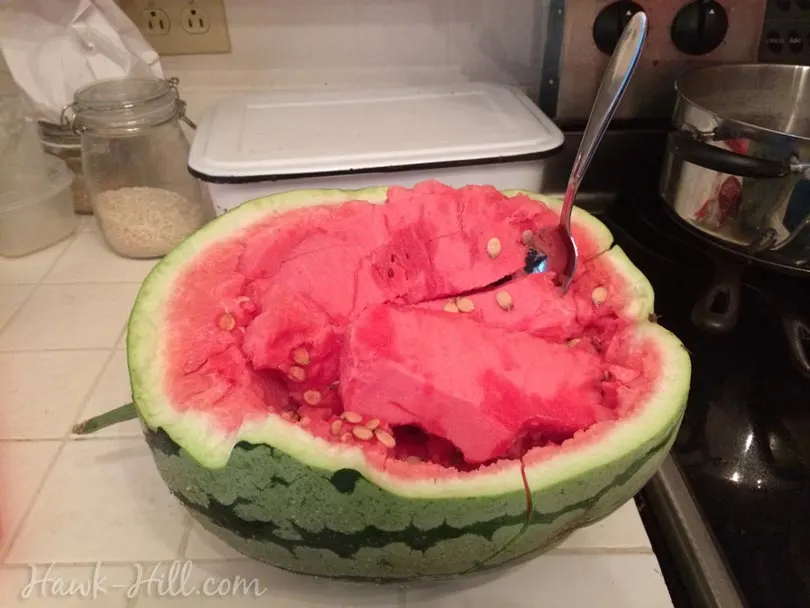
Ann
Friday 19th of January 2024
Hi. I love this and will be doing this in the summer. New to gardening but after the season is over do you take down all the climbing vines ?
Lindsayanne Brenner
Monday 29th of January 2024
Yes - I remove the dried vines at the end of the season, BUT I do know some folks who don't mind where the vines are growing and just leave them year over year. A bit of a choose your own adventure response :]
Sarah
Monday 22nd of August 2022
Hi! How do you know when a melon is ready to harvest? Do they get a yellow spot like when they’re grown on the ground?
Lindsayanne Brenner
Tuesday 23rd of August 2022
I usually test my watermelons for ripeness by tapping on the outside. When they begin to sound hollow, they're usually ripe.
Jordan Possehl
Monday 15th of March 2021
Can I plant my watermelons in a raised bed with a tomato cage? I have the Sugar Baby variety.
Lindsayanne Brenner
Monday 15th of March 2021
Great question! A watermelon vine healthy enough to produce 1 or 2 melons (even small ones) will have multiple vines, each sprawling 10 feet or more! A tomato cage can help train a young watermelon plant's vines to move towards a larger structure, but won't be able to contain the plant as it matures.
Kelly Murillo
Saturday 12th of January 2019
This is great! I never would have thought about growing watermelons next to the chicken coop. I think this is a brilliant idea and I will be doing this in the summer. Thanks!